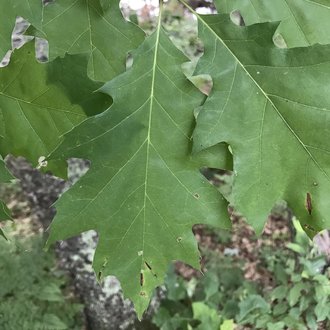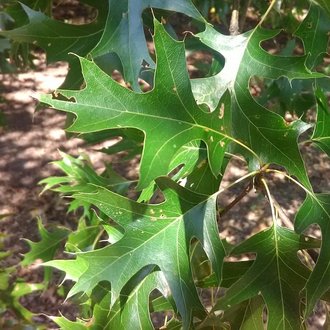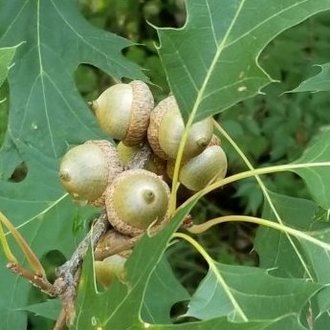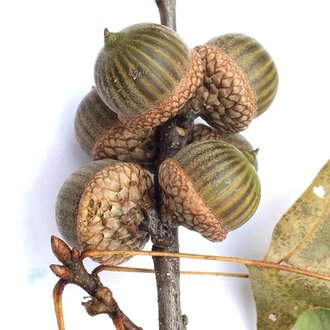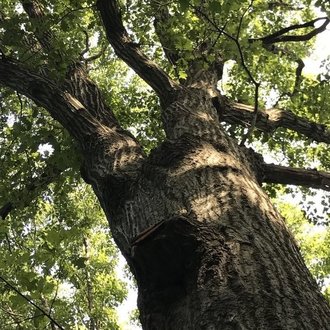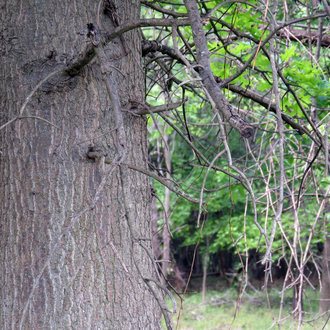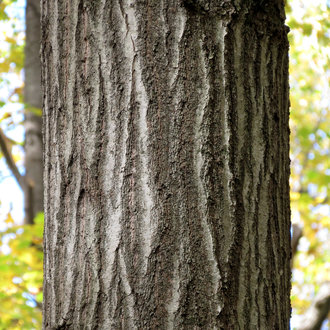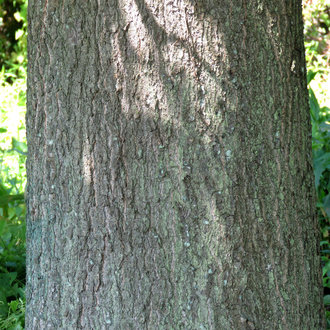Northern Red Oak vs Pin Oak
These trees are sometimes confused, mainly because they are both common in landscaping and both have pointy-lobed leaves, but they are easily distinguished by leaves, acorns, and growth habit. In the wild, pin oak is found on wetter, sunnier sites and northern red oak on drier, more shaded sites, with relatively little overlap in habitat.
Northern Red Oak (Quercus rubra) | Pin Oak (Quercus palustris) |
A large tree, one of the dominant components of the forests of eastern North America, native to a wide range of the northeastern U.S. and Canada, extending well into the south. | A fast-growing, short-lived red oak of poorly-drained sites, with a large, heavy central trunk and numerous small side branches. |
Larger leaves have 7-11 lobes. Leaves often look broad and full, with shallow sinuses between lobes. Lobes close to the base of each leaf angled forward towards the leaf tip like the other lobes: veins of these lobes curve outward less, usually only at the very tip of each lobe. Photo © Aaron Boers, CC BY 4.0. | Smaller leaves have 5-7 lobes. Leaves usually have deep sinuses and narrow lobes. Lobes close to the base of the leaf often extend nearly perpendicular to the midrib, with the central veins of these lobes curving outward. Photo © Claire Secrist, Public Domain. |
Much larger acorns. Photo © Rob Norris, Public Domain. | Much smaller acorns. Photo © Ron Burkert, CC BY 4.0. |
Fewer branches, but branches are larger and heavier. Lowest branches on tree are usually ascending or horizontal but not descending. Single-trunk habit only extends to the point of major branching. Self-prunes more; mature trees often have few lower branches. Photo © Michael Ellis, CC BY 4.0. | Single-trunk habit with numerous side branches. Lower branches descending, middle branches horizontal, and upper branches ascending. Dead lower branches are often retained for years. Photo © Katja Schulz, CC BY 4.0. |
Bark of mature trees has wide ridges with flat tops of light gray bark, and wide, shallow furrows of a darker color, often showing a hint of orangish color underneath. Photo © Katja Schulz, CC BY 4.0. | Bark of mature trees light gray-brown: smoother on a large scale, with narrower ridges and furrows. Photo © Katja Schulz, CC BY 4.0. |
References & External Resources
These short lists show only links helpful for ID. For a complete list of references and resources also covering other aspects of ecology, visit the links section of the full article on each plant, which is the first entry here.



